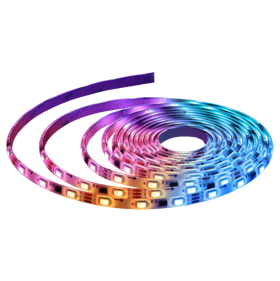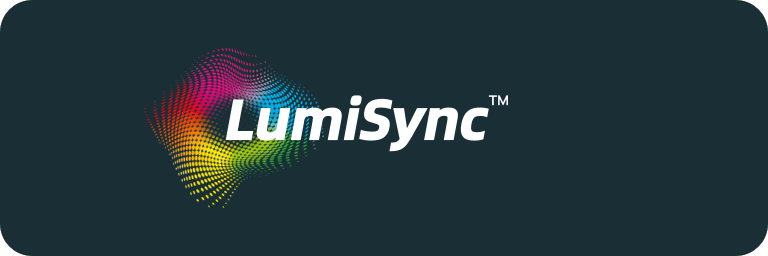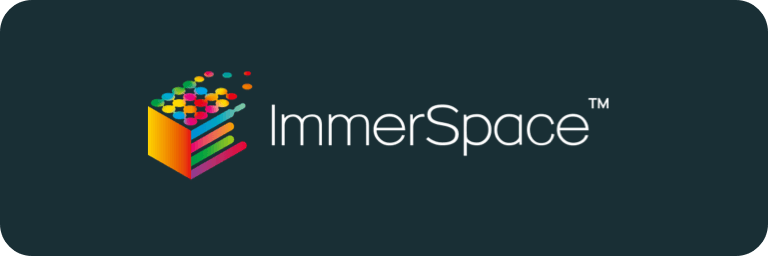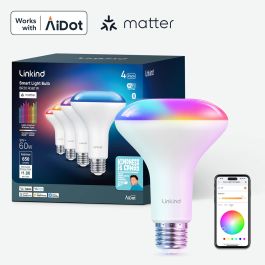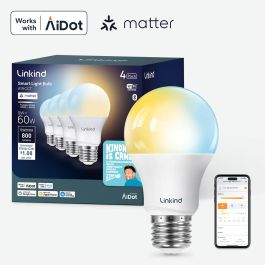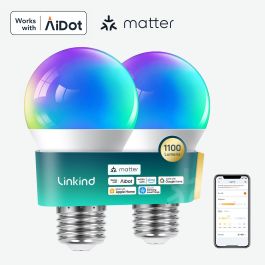Thread Smart Bulbs: The Future of Connected Lighting with Matter
In This Article:
- Thread Technology in Smart Bulbs
- Matter Protocol: Revolutionizing Smart Home Connectivity
- Thread vs. Matter: What's The Difference?
- Top Thread and Matter Light Bulb Options for a Smarter Home
- How to Set Up Your Thread and Matter Lighting System
- FAQs About Thread and Matter Light Bulbs
Smart lighting has transformed how we illuminate our homes, offering features like remote control, automation, and energy efficiency. Traditionally, most smart bulbs relied on Wi-Fi, Bluetooth, or Zigbee, but these protocols often had limitations in speed, stability, and compatibility.
With the rise of Thread smart bulbs and Matter light bulbs, smart lighting has become more reliable and future-proof. Thread is a low-power, wireless protocol designed to create a more responsive and interconnected smart home. Matter, on the other hand, is a universal standard that ensures all smart home devices—regardless of the brand—work seamlessly together. Matter over Thread light bulbs combine both technologies, delivering the ultimate smart lighting experience with enhanced interoperability and performance.
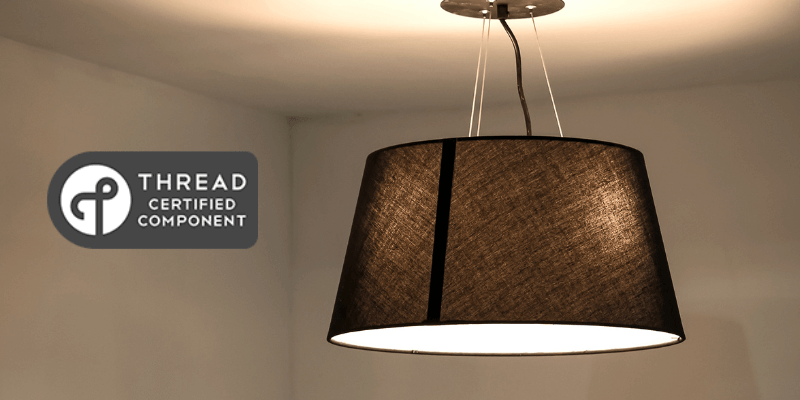
Thread Technology in Smart Bulbs
Thread is a network protocol designed for smart homes that offers reliability, security, and energy efficiency. It provides quick response times and wider coverage, enhancing the overall smart home experience.
As an open standard based on IP technology, Thread enables seamless integration of various home automation devices including lights, thermostats, door locks, sensors, and smart speakers. These devices can connect directly to the cloud while maintaining secure and dependable communication within your smart home ecosystem.
Thread light bulbs use a wireless networking protocol that creates a self-healing mesh network. Unlike Wi-Fi or Bluetooth bulbs, Thread bulbs don’t rely on a central hub, reducing lag and connection drops.
Benefits of Thread Technology for Lighting:
Faster Response Times – Thread lights react instantly to commands, unlike Wi-Fi bulbs that may experience delays.
Greater Stability – Even if one Thread device fails, the network remains functional due to its mesh structure.
Lower Power Consumption – Thread is energy-efficient, making it ideal for smart lighting setups.
How Thread Light Bulbs Create a Mesh Network
Thread-enabled devices communicate with one another in a self-repairing mesh network, ensuring reliability. If one device disconnects, others will keep the network running smoothly without interruptions.
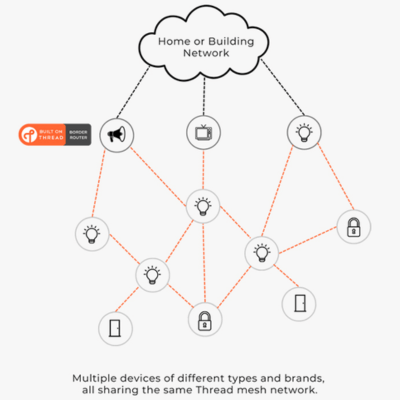
Image Source: Thread Group
Matter Protocol: Revolutionizing Smart Home Connectivity
Matter is a groundbreaking connectivity standard developed collaboratively by major tech companies including Apple, Google, Amazon, and Samsung through the Connectivity Standards Alliance (formerly Zigbee Alliance). Launched in late 2022, Matter represents a unified approach to smart home technology, addressing the fragmentation that has long plagued the industry.
At its core, Matter is an IP-based protocol that operates as a common language for smart devices. It works alongside existing network technologies like Wi-Fi, Thread, and Ethernet, creating a standardized communication layer that enables devices from different manufacturers to work seamlessly together. This open-source approach ensures that smart home products can communicate effectively regardless of brand or ecosystem.
Matter smart light bulbs are lighting products that use the Matter protocol, enabling them to work across multiple smart home platforms with standardized controls, simplified setup, and enhanced security. They operate via Wi-Fi or Thread networks.
Benefits of Matter Protocol for Smart Homes:
- Simplified setup: Easy device onboarding with QR codes
- Local control: Functions without internet for faster response times
- Enhanced security: Device attestation and end-to-end encryption
- Consumer-friendly: Eliminates compatibility research before purchasing
How Matter Smart Home Creates a Unified Smart Home Ecosystem
Matter's approach to creating a unified smart home ecosystem centers on three key principles:
Platform-Agnostic Architecture: By functioning across multiple platforms, Matter eliminates ecosystem lock-in. Users can mix devices from different manufacturers and control them through their preferred voice assistant or smartphone app.
Standardized Device Categories: Matter defines specific device types with standardized attributes and commands, ensuring consistent functionality across brands. For example, a Matter-certified light bulb will respond to the same commands regardless of manufacturer.
Seamless Multi-Admin Control: Matter's multi-administrator capability allows devices to be controlled simultaneously by different platforms. A family can use both Google Home and Apple Home to manage the same devices without conflict or reconfiguration.
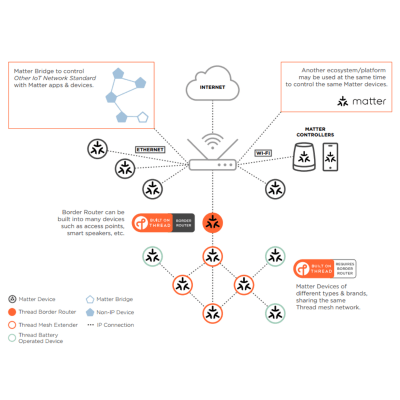
Image Source: Thread Group
Thread vs. Matter: What's The Difference?
Thread and Matter are two key technologies shaping the future of smart homes, but they serve distinct purposes. Here's a breakdown of their differences:
Key Takeway:
- Thread is a networking protocol that allows devices to communicate with each other.
- Matter is a standard that ensures devices from different brands work together.
|
Category |
Thread |
Matter |
|
Purpose |
A networking protocol for creating low-power, reliable mesh networks for smart devices. |
A connectivity standard that ensures devices work across brands/ecosystems (Apple, Google, Alexa, etc.). |
|
Technology Type |
How devices connect (like "roads" for data). |
How devices communicate (like "language" for devices). |
|
Compatibility |
Requires Thread-enabled devices and hubs (e.g., Apple HomePod, Google Nest Hub). |
Works with any Matter-certified device or ecosystem, regardless of brand. |
|
Network Requirements |
Uses a Thread mesh network (self-healing, low latency). Requires a Thread border router. |
Works over Wi-Fi, Ethernet, or Thread. No single network dependency. |
|
Performance |
Ultra-low latency, energy-efficient, ideal for large homes. |
Depends on the network (e.g., Wi-Fi latency vs. Thread efficiency). |
|
Setup |
Needs a Thread border router (e.g., Apple HomePod Mini). |
Uses QR code or app for easy setup. |
|
Ecosystem Support |
Limited to Thread-supported ecosystems (e.g., Apple Home, Google Home). |
Universal: works with Apple, Google, Amazon, Samsung, etc. |
|
Future-Proofing |
Great for scalable smart homes with many devices. |
Ensures long-term compatibility as brands adopt Matter. |
Knowledge Base:
Matter vs Zigbee: What's The Difference
Top Thread and Matter Light Bulb Options for a Smarter Home
Modern smart lighting has evolved with the rise of Thread-enabled bulbs, Matter-compatible options, and hybrid Matter over Thread technology, offering seamless integration, energy efficiency, and future-proof connectivity. Below, we explore five leading smart bulbs that excel in reliability, compatibility with platforms like Apple Home, Google Home, and Alexa, and advanced features like tunable whites and voice control. Whether you prioritize speed (Thread), universal standards (Matter), or both, these bulbs deliver exceptional smart home performance.
1. Nanoleaf Essentials Matter A19 Smart Bulb
Introducing the Nanoleaf Matter Thread A19 Smart Bulb, a state-of-the-art lighting solution that harnesses the power of Matter over Thread technology. This innovative smart bulb represents the future of connected lighting, offering seamless integration, enhanced performance, and unparalleled versatility for your smart home ecosystem.
Key Benefits:
Universal Compatibility: Works with all major smart home platforms via Matter.
Fast Response Times: Thread technology ensures quick and reliable device communication.
Low Power Consumption: Ideal for battery-operated devices, extending battery life.
Future-Proof: Combines Matter's interoperability with Thread's robust mesh networking for long-term compatibility.
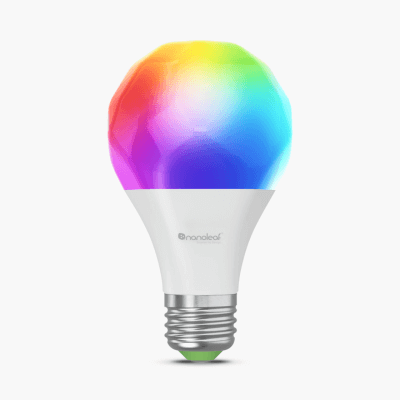
2. Linkind A19 Matter Light Bulbs
The Linkind matter smart light bulbs represent the cutting edge of smart home lighting technology. These innovative bulbs seamlessly integrate Matter protocol support with versatile connectivity options, offering users a future-proof lighting solution that enhances any smart home ecosystem.
Key Benefits:
Universal Compatibility: Works with Apple, Google, Amazon, and Samsung ecosystems via Matter.
Reliable Connectivity: Dual Wi-Fi and Bluetooth for stable control.
Immersive Lighting: 16 million colors and music syncing capabilities.
Superior Color Rendering: High CRI 90+ for natural tones.
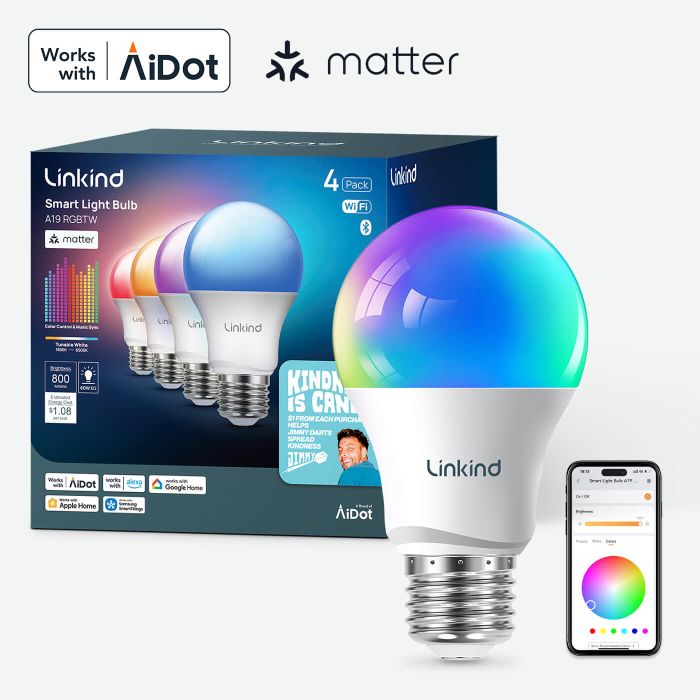
-
Seamless & Stable Connectivity: Linkind smart bulbs feature dual Wi-Fi/Bluetooth for reliable control anywhere. Wi-Fi enables remote access; Bluetooth serves as backup. Quick 5-second reconnection after outages.
-
Matter-Enabled: Matter-compatible bulbs work with Apple, Google, Amazon & Samsung ecosystems. Control all from one app—schedule, dim, and create scenes easily.
-
Sync Lights to Music: Transform spaces with two sync modes—synchronized for uniform beat-matching or asynchronous for multi-color displays that respond independently to music.
-
Scene Modes: 104 presets and 16 million colors give complete creative control. Personalize any space with one tap for movies, gaming, or relaxation.
-
True-to-Life Colors: CRI 90+ ensures rich, natural tones. Adjust from warm 1,800K to crisp 6,500K daylight, or explore endless color options for any mood.
3. Aqara LED Bulb T2
The Aqara smart light bulb combines versatility, advanced connectivity, and customizable features to elevate your smart home experience. This innovative bulb seamlessly integrates Thread and Zigbee protocols, offering users unparalleled flexibility in their smart home setups.
Key Benefits:
Dual Connectivity: Supports Thread and Zigbee for flexible smart home integration.
Customizable Lighting: Offers tunable whites (2000-9000K) and 16 million colors.
Adaptive Lighting: Automatically adjusts color temperature throughout the day.
Energy Efficient: Low idle power consumption of just 0.4W.
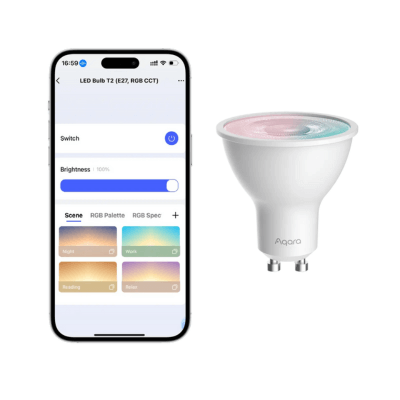
How to Set Up Your Thread and Matter Lighting System
A seamless smart lighting setup hinges on understanding how Thread and Matter work together to create fast, reliable, and future-proof networks. This section breaks down the installation of Thread-enabled bulbs, integration of Matter-compatible devices, and optimization tips to ensure your system runs smoothly. Whether you’re building a new smart home or upgrading an existing setup, these guidelines will help you maximize performance and compatibility across platforms like Apple Home, Google Home, and Alexa.
Step-by-Step Guide to Installing Thread Smart Bulbs
Thread’s low-latency, self-healing mesh network ensures responsive smart lighting. Here’s how to set up Thread bulbs:
Step 1. Check Compatibility: Ensure your hub (e.g., Apple HomePod, Google Nest Hub) supports Thread and acts as a Thread border router.
Step 2. Install the Bulb: Screw in the Thread bulb and power it on.
Step 3. Add via App: Open your preferred platform (e.g., Apple Home, Google Home) and follow prompts to detect the bulb.
Step 4. Test Connectivity: Use voice commands (e.g., “Hey Siri, turn on the lights”) to confirm responsiveness.
Step 5. Expand the Network: Add more Thread devices to strengthen the mesh—each bulb acts as a node for better coverage.
Pro Tip: Place Thread border routers centrally to ensure strong signal distribution.
Integrating Matter Light Bulbs into Your Smart Home
Matter’s universal standard simplifies cross-platform control. Follow these steps:
Step 1. Confirm Ecosystem Support: Ensure your smart home hub (e.g., Amazon Echo, SmartThings) is Matter-certified.
Step 2. Scan the QR Code: Use your hub’s app to scan the Matter setup code on the bulb’s packaging.
Step 3. Assign to Rooms: Organize bulbs by room in the app for streamlined control.
Step 4. Sync Across Platforms: Share access with other ecosystems (e.g., link Alexa to Google Home) using Matter’s multi-admin feature.
Step 5. Test Voice Commands: Verify control via Alexa, Google Assistant, or Siri.
Pro Tip: Reset bulbs with a factory reset if pairing fails—this often resolves connectivity hiccups.
Tips for Optimizing Your Lighting Network
Maximize performance and reliability with these best practices:
- Prioritize Placement: Position Thread border routers and hubs away from obstructions (e.g., thick walls, metal objects).
- Update Firmware: Regularly check for firmware updates via the manufacturer’s app to ensure security and feature upgrades.
- Limit Network Congestion: Separate smart home devices onto a dedicated 2.4GHz Wi-Fi band to reduce interference.
- Use Automation: Schedule routines (e.g., sunrise wake-up, away-mode lighting) to reduce manual control.
- Monitor Performance: Use apps like Apple Home or Eve Energy to track network health and device responsiveness.
Pro Tip: Label bulbs during setup (e.g., “Kitchen Overhead”) to avoid confusion in voice commands.
Final Thought
Thread bulbs deliver faster responses, stability, and energy efficiency, while Matter ensures cross-platform harmony. Merged as Matter over Thread, these technologies future-proof smart homes with seamless, universal compatibility. As adoption grows, lighting systems will become effortlessly integrated, eco-friendly, and accessible across all major ecosystems—simplifying upgrades and solidifying smart homes as intuitive, sustainable hubs. The future of connected lighting is unified, efficient, and built to evolve.
FAQs About Thread and Matter Light Bulbs
Q1. Are Matter Bulbs the Same as Thread Bulbs?
No. Thread bulbs use the Thread network, while Matter bulbs work with the Matter protocol. However, Matter over Thread light bulbs combine both technologies.
Q2. Do I Need a Thread Border Router for Matter Over Thread Light Bulbs?
Yes, a Thread border router (like Nest Hub 2nd Gen or Apple HomePod Mini) is required to enable Matter over Thread connectivity.
Q3. Can Thread Smart Bulbs Work Without Matter?
Yes, Thread smart bulbs can function without Matter, but adding Matter ensures universal compatibility with multiple platforms.
Q4. Which Brands Support Both Thread and Matter?
Some popular brands include: Nanoleaf (Thread + Matter);Eve (Thread + Matter);Philips Hue (Matter-compatible);TP-Link Kasa (Matter-compatible)













